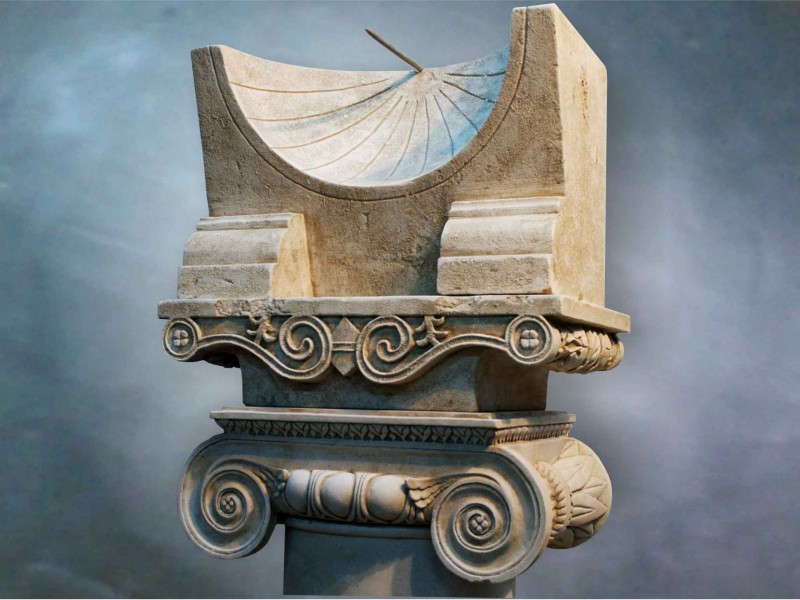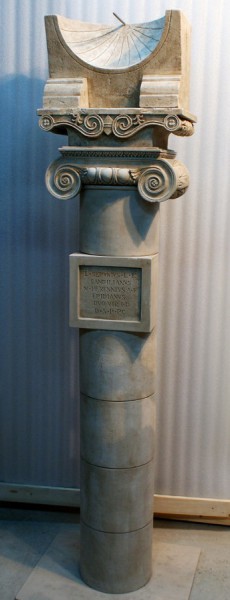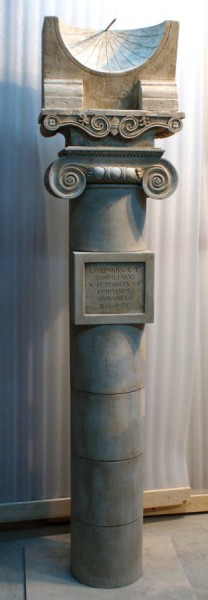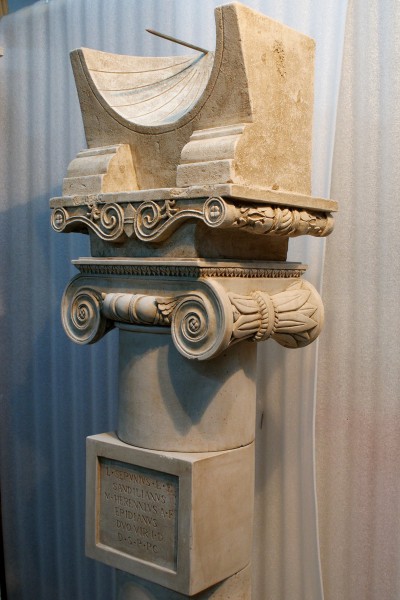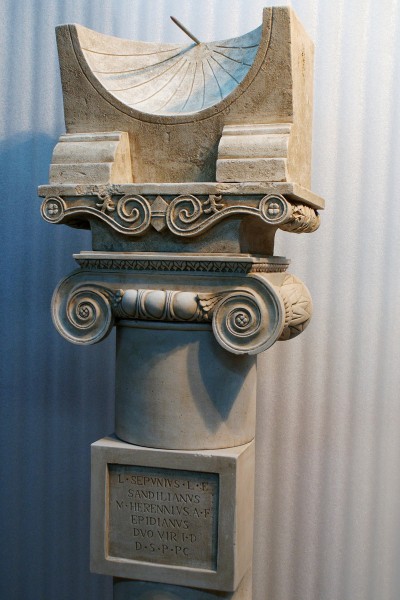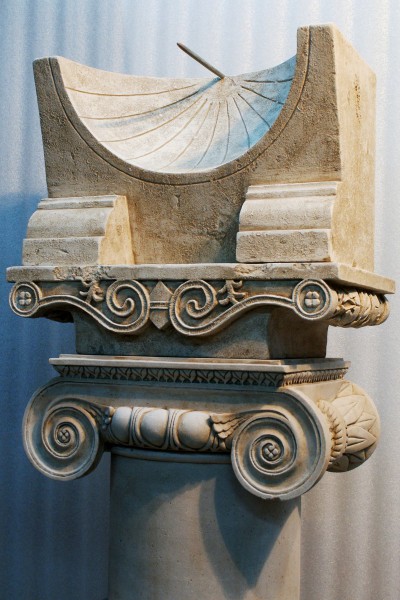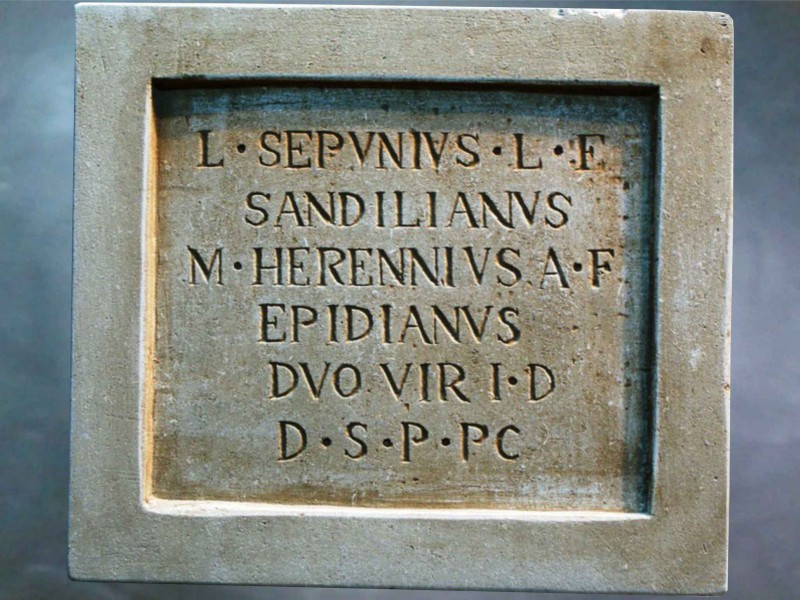Aleksandr Boldyrev sundials
Sundials and cultural artifacts
Pompeii. Greco Roman sundial
Specifications.
Single copy, Limestone, copper. Artificial aging, patina. Height 2030 mm. Weight about 450 kg.
Price 650 000 R.
Материалы по теме.
1. «Roman Pompeii. Space and society» by Ray Lowrence.
2. Web page by Nicola Severino.
Description.
Greco Roman sundial is set on a column with the ionic capital separated to each other with the carved spacer. The whole set is a smaller copy of the Greco Roman sundial installed at the beginning of the first millennium by the entrance of the temple of Apollo, Pompeii. The only difference is that the instrument is designed to measure time at the meridian of Moscow. Like its historical analogue, the instrument has a scale divided into one-hour intervals. Accuracy of the scale, by definition, is equal to thirty minutes.
Pompeii was destroyed at the eruption of Vesuvius on August, 24th, 79 CE. Archeological excavations started in 1748. In 1763 the conclusion was made that the city lying under the ashes is the well-known Pompeii.
During an epoch of early Roman Empire the big money were invested in building of public and private edifices. Sometimes, it were duumviri (the elected persons managing areas together) who paid for that. Towns were decorated by sculptural images of the emperor and members of his family, and also public and private buildings were under construction. So in Pompeii the theater has been completed, stone benches for an amphitheater were made, Apollo's temple was finished and by the left of the entrance of it the sundial had been erected. A sponsor of civil works or a persons who supervised over them as a manager or as an architect had an opportunity to immortalize his name. Marble tablets with names have still been found in Pompeii. The inscription on a column supported this Greco Roman sundial says:
Lucius Sepunius Sundilianus, son of Lucius,
and Marcus Herennius Epidianus, son of Aulus,
duumvers wich judicial power,
saw to this being made at their own expense.
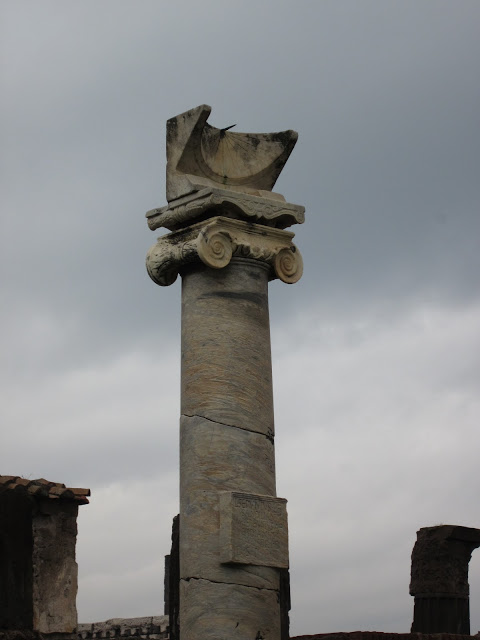
Genuine Greco Romance sundial mounted on the left of the entrance to the Temple of Apollo. Pompeii. Photo by Alexander Spence-Cotgreave.
